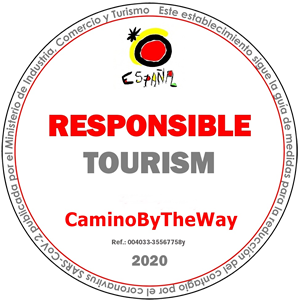1. Santiago de Compostela
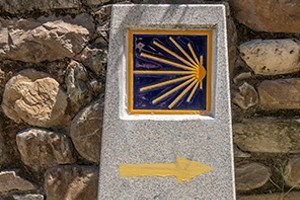 The yellow arrow is one of the most iconic images of the Camino de Santiago. The arrow points pilgrims in the direction of Santiago de Compostela and can be found on walls, rocks, trees or the very ground one walks upon. One simple piece of advice: Never turn unless there is a yellow arrow clearly instructing you to do so.
The yellow arrow is one of the most iconic images of the Camino de Santiago. The arrow points pilgrims in the direction of Santiago de Compostela and can be found on walls, rocks, trees or the very ground one walks upon. One simple piece of advice: Never turn unless there is a yellow arrow clearly instructing you to do so.
Don Elías Valiña, parish priest of the village of O Cebreiro, was the man behind the revival of the Camino de Santiago as we know it today and the first person to mark the way with this symbol. In the early 1980s, when Don Elías Valiña began his mission to mark the route, there were sections that were utterly impassable. His first task was to meet with mayors and local associations in order to identify and safeguard the original sections of the pilgrimage.
By the late 1980s, the entire Camino Francés was marked with yellow arrows. The reason behind the color of these arrows is quite coincidental: While Don Elías was considering the task of signing the entire 800 kilometres of the Camino, a local road maintainance company offered the leftovers of the yellow paint it was using for a signage project.
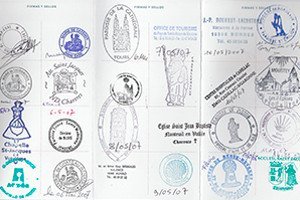 The Credencial, or Pilgrim’s Passport, is a small folded document that records the places that a pilgrim passes through on their way to Santiago de Compostela. Along the Camino, pilgrims request a dated stamp at every overnight lodgings, thus verifying that they have covered at least 100 kilometers, the minimum required to obtain a pilgrim’s certificate.
The Credencial, or Pilgrim’s Passport, is a small folded document that records the places that a pilgrim passes through on their way to Santiago de Compostela. Along the Camino, pilgrims request a dated stamp at every overnight lodgings, thus verifying that they have covered at least 100 kilometers, the minimum required to obtain a pilgrim’s certificate.
CaminoByTheWay provides this document to each pilgrim before they begin their journey.
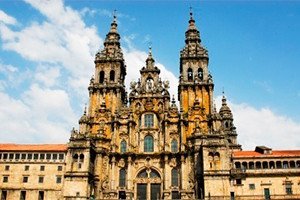 James (Santiago), son of Zebedee and Salome, brother of Saint John the Apostle, was a fisherman before becoming one of Jesus’ disciples and the great evangelizer of the Iberian Penisula. Intent on quelling the rise of Christianity, Herod Agrippa, King of Judea, later ordered James’ beheading. Two of his disciples, Atanasio and Teodoro, transported his body from Jerusalem to Iria Flavia (Padrón) on the Galician coast.
James (Santiago), son of Zebedee and Salome, brother of Saint John the Apostle, was a fisherman before becoming one of Jesus’ disciples and the great evangelizer of the Iberian Penisula. Intent on quelling the rise of Christianity, Herod Agrippa, King of Judea, later ordered James’ beheading. Two of his disciples, Atanasio and Teodoro, transported his body from Jerusalem to Iria Flavia (Padrón) on the Galician coast.
Around 820 CE, a villager named Pelayo observed a radiant glow above a hill lasting several nights. He informed the bishop Teodemir of Iria, and when they arrived at the mysterious site, they found a tomb and three bodies that were identified as Saint James and his two disciples. Henceforth, the tomb became a sacred site for many devoted pilgrims, who journeyed from all over Europe to visit it. Along the primary route to the site, hospitals, bridges, monasteries and churches were constructed—the wonderful historic and artistic heritage of the Camino de Santiago.
In 1993, the Camino was declared a UNESCO World Heritage Site, relaunching its popularity among hikers and pilgrims alike. The Camino continues to grow, with over 200,000 pilgrims from all four corners of the globe arriving in the city of Santiago de Compostela every year.
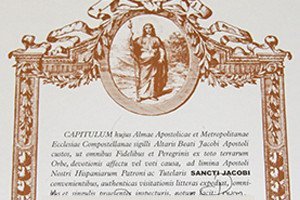 The Compostela, or Pilgrim’s Certificate, is a document issued to pilgrims who have walked at least 100 kilometres to Santiago de Compostela (200 kilometres in the case of cyclists). Once you show your fully-stamped Credencial at the Pilgrim’s Office in Santiago, you will receive your Compostela certifying that you have completed the Camino.
The Compostela, or Pilgrim’s Certificate, is a document issued to pilgrims who have walked at least 100 kilometres to Santiago de Compostela (200 kilometres in the case of cyclists). Once you show your fully-stamped Credencial at the Pilgrim’s Office in Santiago, you will receive your Compostela certifying that you have completed the Camino.
The Finisterre Certificate, or Finisterrana, is the certificate issued to pilgrims who have walked as far as the coastal town of Finisterre. Written in Galician, the certificate can be obtained from the local hostel or town council.
